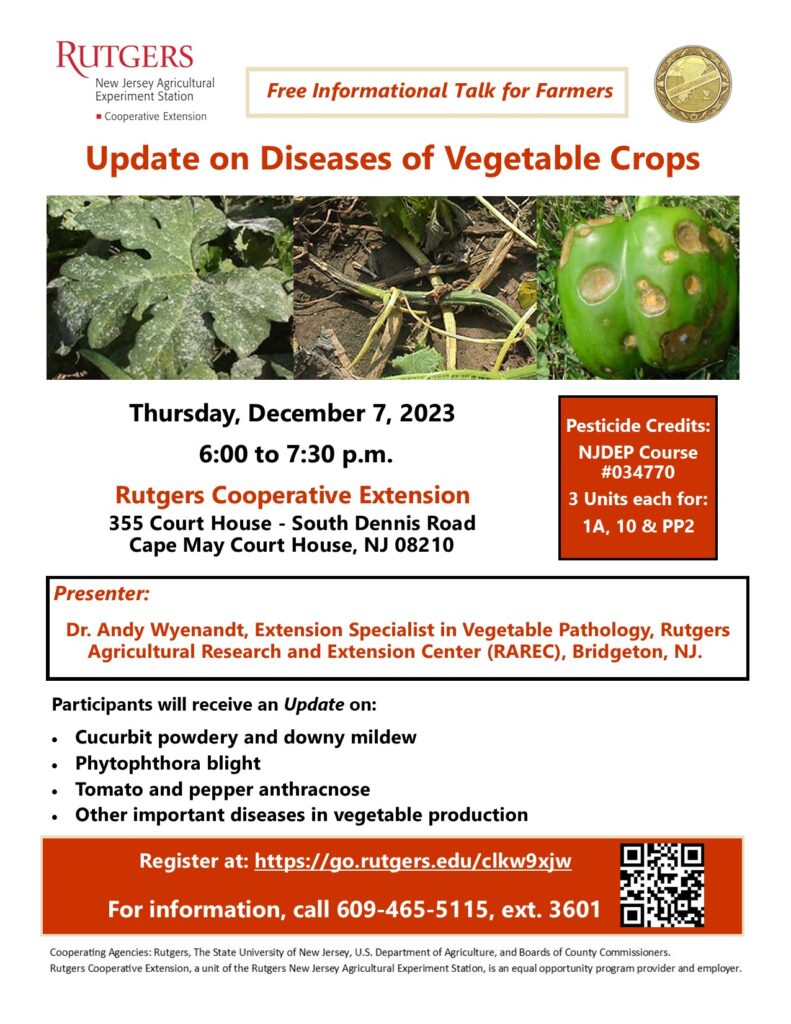The Updates on Diseases of Vegetable Crops free informational talk with Dr. Andy Wyenandt is now being held via Zoom!
Date: December 7th, 2023
Time: 6:00 – 7:30pm
Registration is required and you will receive the Zoom link with your registration confirmation.
Register here: https://go.rutgers.edu/clkw9xjw
For additional information you can call (609) 465-5115, ext. 3601 or email capemayag@njaes.rutgers.edu

